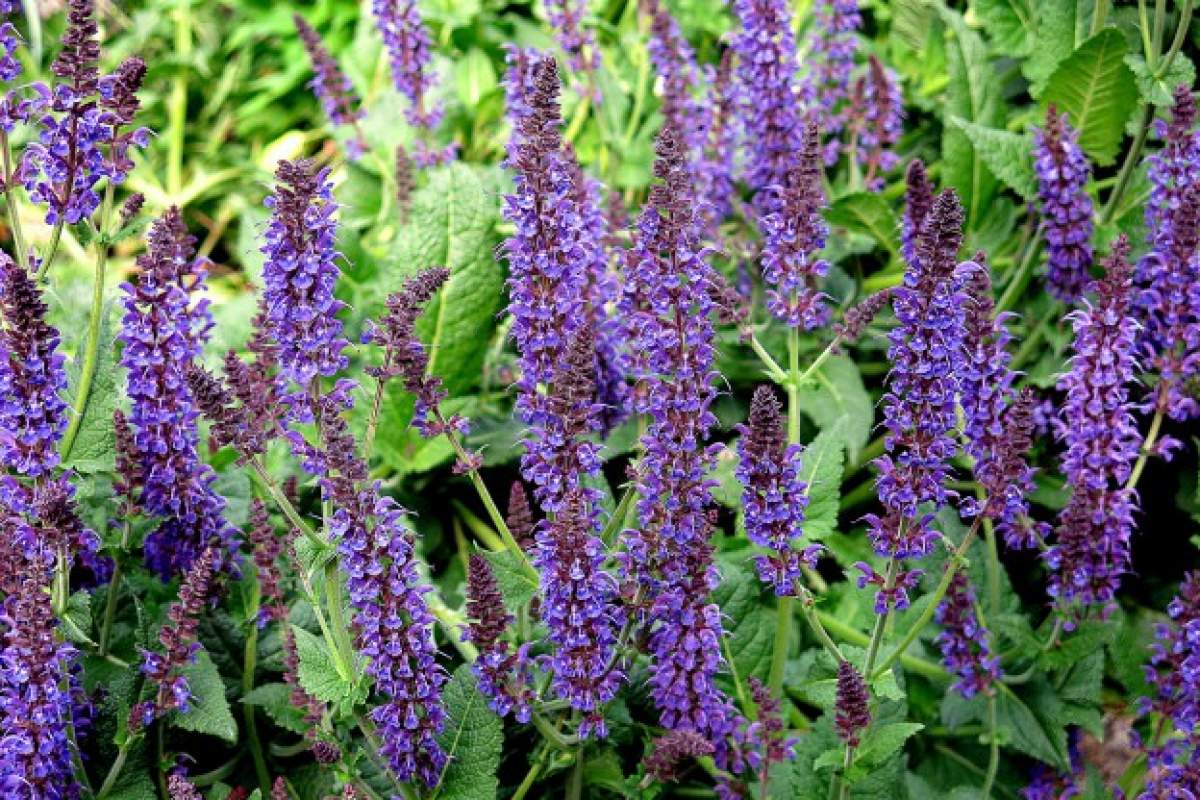
There are roughly 900 species of salvia, which is the largest genus in the mint family. The common name is sage, and the genus includes annuals, perennials, and sub-shrubs. Remember that sub-shrubs have the woody base of a shrub and soft top growth. When pruning a sub-shrub such as sage or lavender, do not cut into or injure that woody base.
Salvias have tubular flowers with two lips and are ancient plants, which were probably taken to England by the Roman legions, as the name is derived from the Latin salveo, meaning "I am well."
There is an old Arabic proverb:
"How shall a man die that has sage in his garden?"
That hints at the plants links with immortality. It was said to have the most power medicinally in May, just before the appearance of the blooms.
Of Mediterranean origins, salvias like full sun and good drainage. The flowers can be most colors but are rarely yellow. The blues, purples, and reds are most admired.
Culinary sage is named Salvia officinalis and is a short-lived perennial with grey-green leaves and purple flowers in summer.
In your flowerbeds, try two-to-three feet tall hybrids sylvestris ‘May Night' or ‘Blue Queen'. ‘East Friesland' is also pretty but shorter. All have violet-blue spires on neat green clumps in zones 4 – 9.









